Tähelepanu juhtimine “oma kodu” mahajätmisele ja uuega kohanemisele, püüdes mõista tänapäeva nomaadide ruumikogemusi. The idea of the work is to draw attention to leaving “your home” behind and adapting to a new one, trying to understand the spatial experiences of the modern day nomads.
KUS NEED ON KÄINUD, MILLEST NEED ON TEHTUD?
WHERE HAVE THEY BEEN, WHAT ARE THEY MADE OF?
Meie ajastu üheks suurimaks väljakutseks inimestele on ränne, oma “kodu” selja taha jätmine ja uuega kohanemine. Seinade uuesti üles ehitamine. Olgu see siis kliimaränne, sõjakoldest pääsemine, poliiilised põhjused või tänapäevane nomaadielustiil, mis tingib pidevat elukoha vahetust.
Liikumise ja ümberkohastumise mugandamiseks tuleks ruumide näol välja töötada hea tugisüsteem. Arhitektuur peab muutuma mitte sinu omaks, mitte meie omaks, vaid kõigi omaks. See peaks olema lihtsamalt ümbermängitav.
Võttes arvesse rändajaid ja nende ruumiga suhestumist, soovisin oma lõputööga luua lähteülesande, mis annaks aluse tulevikus ruumiga töötamisele. Et jõuda eesmärgini, oli minu fookuses rändajate intervjueerimine. Vestlesin projekti käigus tänapäeva nomaadielu elavate inimestega ning uurisin nende arusaama kodust, kogemusi ning mälestusi saabumisest
We live in an era when one of the biggest challenges for people is migration, leaving their “home” behind and adapting to a new one. Rebuilding the walls. Be it climate migration, escape from war, political reasons or the modern nomadic lifestyle, which requires a constant change of residence.
A good support system should be developed in the form of rooms to facilitate movement and adaptation of new spaces. Architecture must become not yours, not ours, but everyone’s. It has to be easily replayable.
Taking into account the travelers and their relationship with the space, I wanted my work to be a starting point, which would provide a basis for working with the space in the future. To reach the goal, my focus was on interviewing the nomads. In the course of the project, I talked with people living a nomadic life and studied their understanding of home, experiences and memories of arrival and departure.

INTERVJUUD RÄNDAJATEGA interviews with the nomads
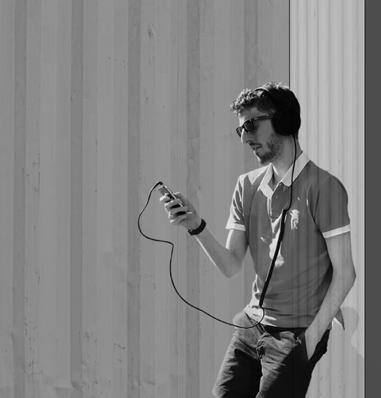
Rändajale on oluline asjade modulaarsus, ümberpaigutamine, mobiilsus, rännakutelt üleskorjatud meened või mõni armsaks saanud raamat riiulil. Need on esemed, mis tekitavad kodutunde olenemata paigast ning mida rändaja vähese vaevaga kaasa pakkida saab.
Intervjueeritavate vastustest kõlasid nostalgilised meenutused oma endistest kodudest. Elemendid, mida välja toodi, varieerusid koledatest tapeetidest kuni pappkastist arvutilauani.
Lisaks rändamisest tingitud põnevusele, peegeldus vestlustest uude kohta saabumisega tekkiv ängistus, keskkonnast tingitud kehakeele muutused, uute inimestega ühenduse leidmise probleem, ekslemine võõras ruumis ning oma koha leidmine.
Vestlesin kokku 10 rändajaga ning enamus vestlusi viisin läbi inglise keeles. Sel põhjusel on valitud intervjuud kajastatud oma originaalkeeles. Intervjuude illustreerimiseks kasutasin kollaaže.
The modularity and mobility of things are important to the traveler. Small elements, fragments picked up from travels or a favorite book on the shelf, these are things that a traveller can easily carry to create a feeling of home regardless of the place.
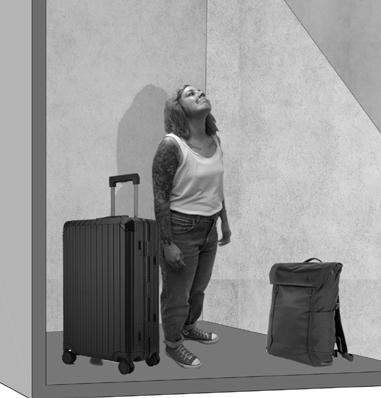
Nostalgic memories of their former homes resounded through the interviewees’ answers. The items that were brought up varied from ugly wallpapers to a cardboard box computer desk.



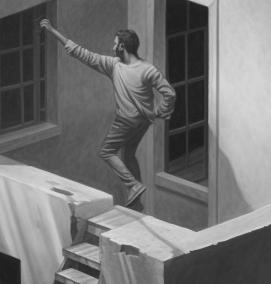

In addition to the excitement of traveling, the conversations reflected the anxiety of arriving a new place, changes in body language, the problem of connecting with new people, wandering around in strange spaces and finding one’s place of stay.
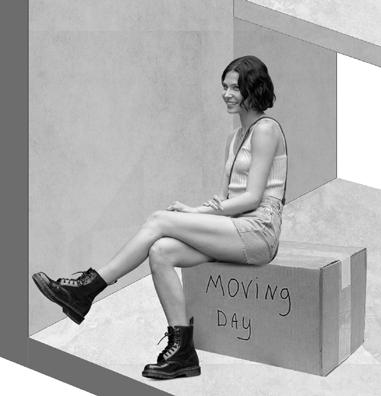
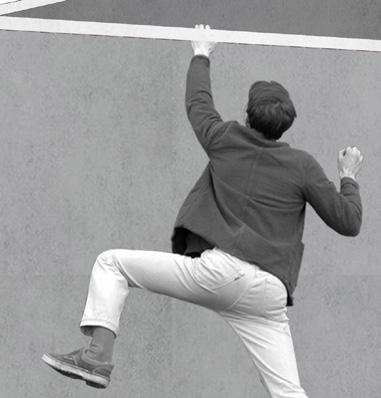
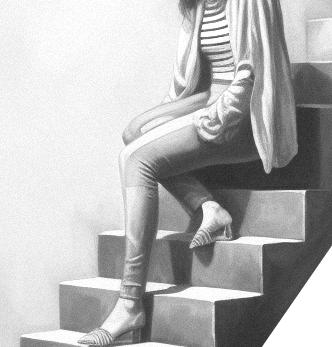
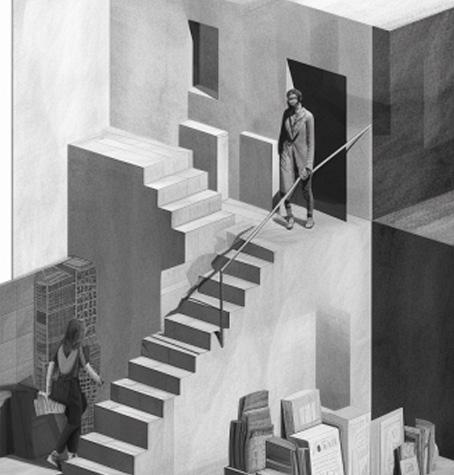
I talked with a total of 10 travellers and most of the conversations were held in English. For this reason, the selected interviews are presented in their original language. I created collages to illustrate the interviews.
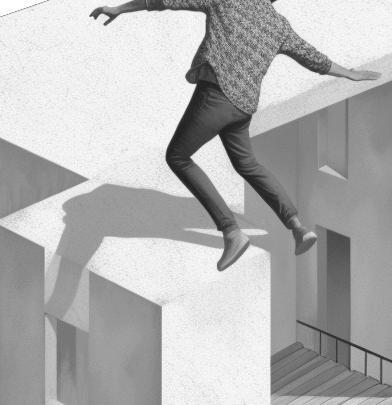
Jean (33) lover of narrow spaces
Q: WHAT IS THE FIRST MEMORY OF YOUR HOME?
A: I was sharing my room with my brother, the thing I remember about my room is that we had to share... the place was small. Because of this, the more tight I feel in a room, it actually makes me feel more like home.
Q: WHAT HAVE BEEN THE BIGGEST CHALLENGES OF RELOCATION FOR YOU?
A: During Covid my workplace forced me to move from a place I had had for 7 years. I had to move during the lockdown and I remember spending the whole night loading my stuff to a car, driving at night to the new place, it felt like I was in a grave, filled with the stuff I had.
The challenge over all has been mainly to adapt to the place and make it “your home”. Whilst you really don’t know when you are leaving again.
The place I am right now, I knew was right for me cause I felt it could easily, without making any big changes become my home.
Q: YOU HAVE HAD QUITE EXTREME EXPERIENCES SETTELING IN ABROAD, AM I RIGHT?
A: Yes. One of the places I had to relocate to was Somalia.
I lived half a year in a commercial container where they had created a room. The dimensions of the room were strictly fixed, I couldn’t move anything. My stuff was all in a small plastic trunk. So that plastic trunk was my life, everything I owned was inside that...

Q: HOW DID THAT EXPERIENCE AFFECT YOU AND YOUR PERCEPTION OF HOME?
A:The work was intense so I went inside mainly just to sleep. That time this container was my universe.
That room was the only place I could listen to music in, it was not allowed to wear headphones outside, there was shooting, bombing, you had to be aware of what was happening. The only “safe space” was that home.
The playlists I listened to there I cannot listen to anymore, it is deeply connected. I think it is important what you wear, what you eat or listen to at a certain time, it will be linked with the place.
Q: WHAT IS THE MEANING OF HOME?
A: For me the kitchen and the music are most important. (describes the layout of the space). It is all about sharing, creating a bond between who is serving and who is being served.
Home is where I’m free to be messy. Wherever I have the liberty to leave the place as it is. Then it’s a home.
Q: HOW IMPORTANT IS STABLE SPACE OF LIVING FOR YOU?
A: I always justified not buying a house because I wanted freedom. I didn’t want to believe in a certain place. I was doing it for freedom, for not having roots anywhere.
Q: WHAT IS THE FIRST MEMORY OF YOUR ROOM?
A: I don’t remember much of my past rooms, only the recent ones, but I do have these fragments... I just remember the mess or the feeling in some way.
Q: HOW OFTEN HAVE YOU HAD TO CHANGE YOUR PERMANENT RECIDENCE?
A: I have been changing places since I was 7 years old, from house to house, city to city and country to country. I’m sure it was hard the first time but by now it just became a mundane thing for me.
The reasons vary but lately it just about wanting to make a change every few years.
Q: HOW HAS THE RELOCATION AFFECTED YOU?
A: Change has always been something that affected me heavily whether I chose it or was chosen for me.
My most recent relocating was to Estonia and this was the first time I had troubles adjusting to a place. It was a bit tough but also in its own way freeing.
I came from a very chaotic place and had to readjust all of those experiences in a calm atmosphere, it got a bit confusing on how to integrate into this kind of society.
Leaving was never hard for me at any time, I consider myself a master of escapism.
Q: HOW MUCH OF PHYSICAL STUFF HAVE YOU CARRIED WITH YOU?
A: I usually carry minimal amount of stuff since with each new place, it’s a new beginning. I just carry the things that remind me of my older self (notebooks, instruments, some silly objects, teddy bears..)
Q: HOW IMPORTANT IS STABLE SPACE OF LIVING FOR YOU?
A: Having a stable space does give me a feeling of stability. But as soon as I get used to a space, those feelings get overrun by the feeling of being stuck and the urge to run away to make something better out of myself. I’d prefer freedom anytime over being stuck because of emotional baggage of a place.

Q: WHAT IS THE MEANING OF HOME?
A: Home isn’t a concept I really believe in. I’ve never cared about home, I just try to go from place to place, have the fullest experience and then move on.
Q: WHICH ROOM DO YOU MISS THE MOST?
A: Every room I’ve ever been in, was a different part of my life.
There was one room I spent a few months in. It had nothing in it really, but at that time just isolating myself there helped to realise a lot of stuff.
Anne (25) nostalgic traveller
Q: WHAT IS THE FIRST MEMORY OF YOUR ROOM?
A: I remember the kitchen of my childhood home. There was a kitchen cupboard right in front of the window. I often sat there as a child and looked out to the garden.
Q: WAS IT HARD FOR YOU TO LEAVE THAT PLACE?
A: It was difficult. I grew up in a place where there was greenery, where I felt warmth, the neighbors were like a second family.
This is also the place where I have lived the longest through out my life- 9 years. It was like my fortress. When it disappeared and was replaced by a two-room apartment in a prefab house somewhere along a high street, my little world collapsed. I will remember this moment forever.
Q: HOW OFTEN HAVE YOU HAD TO CHANGE YOUR PERMANENT RECIDENCE?
A: After the first time moving, I often changed residences and still do. I have moved about 16 times in total.
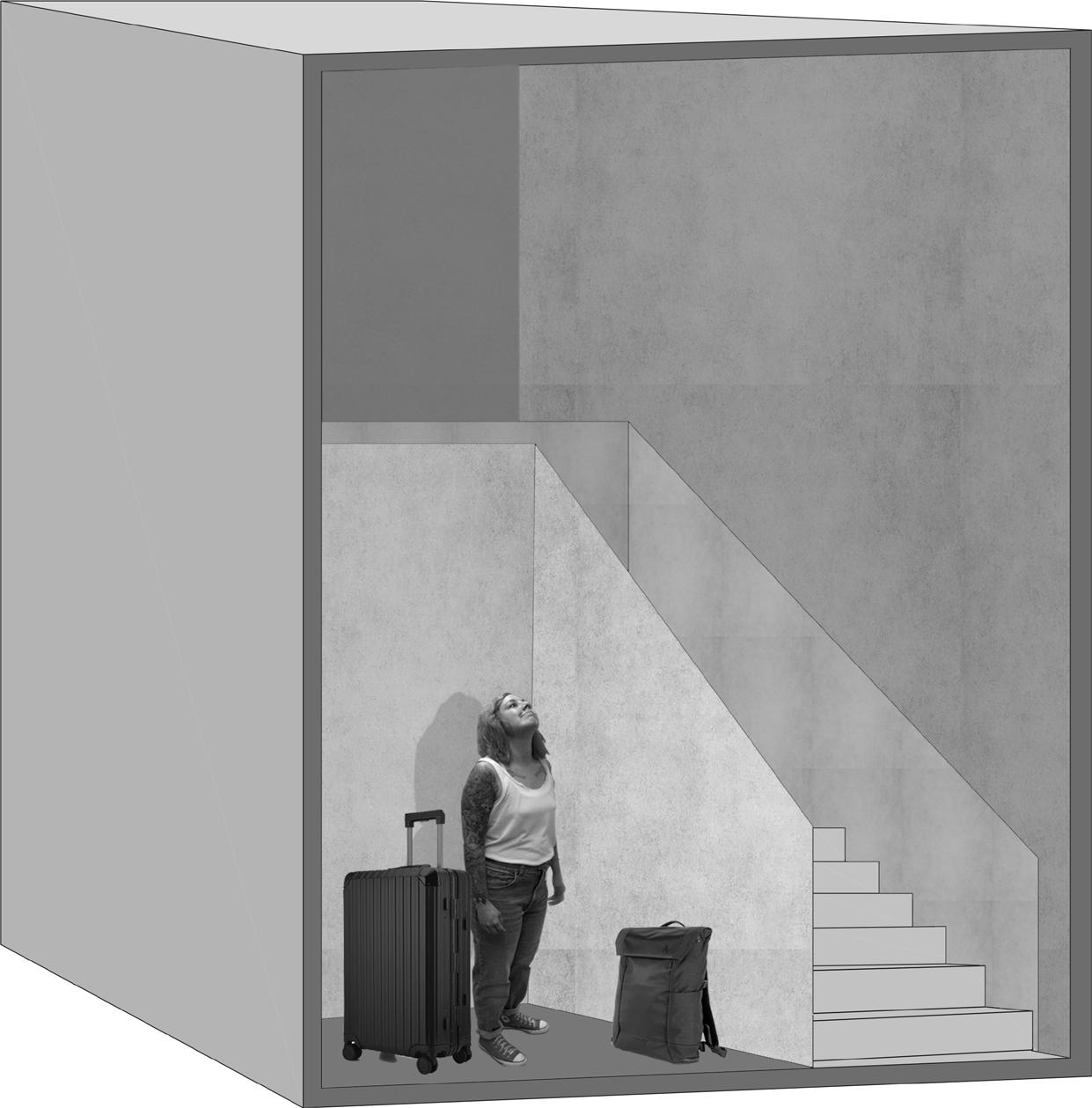
Q: HOW HAS THE RELOCATION AFFECTED YOU?
A: I learned to let go of “my” place. I tried to find the joy of discovery in new places. I was also forced to move to places I strongly protested against, I had no idea or vision of this next place as my home. But somehow my mother always managed to make these places a home. We built temporary walls, poured floors, adjusted furniture and sometimes escaped into dreams of what this “real” home could be.
I moved to a new city on my own 5 years ago. In the beginning, I changed places of residence every six months. It was no longer difficult for me, I wasn´t holding on to anything mentally.
Travelling far away never made me feel anxious or worried about what if I don’t find my place or don’t fit in, don’t feel at home or start missing something. There was never such a fear. I knew that even without the so-called safety net, I would somehow find my place or a helping hand abroad.
Q: SO ABOUT LEAVING, IS IT STILL HARD FOR YOU?
A: Not anymore. I make decisions quickly and act on the spur of the moment. The connection I have with the space I’m in at the moment is important to me, but it’s not something I can’t find anywhere else.
Q: HOW MUCH OF PHYSICAL STUFF HAVE YOU CARRIED WITH YOU?
A: Less and less. I’m constantly filtering my stuff, trying to get rid of as much as possible and replacing as little as possible. I usually have things with a specific purpose, nothing superfluous. It would tire me out. There are also a few sentimental things or items that I have taken from place to place, even to another country. A friend’s poetry book and my childhood teddy bear.
Q: WHAT HAVE BEEN THE BIGGEST CHALLENGES FOR YOU ARRIVING TO A NEW PLACE?
A: A certain feeling of loneliness, perhaps. But the surroundings keep the mind busy.
Navigating the space is another thing. I remember when I arrived to Germany, to the big airport, in which I wandered for a long time, carrying my whole life with me, to find the subway and get to my apartment.
Everything moved and worked at a completely different pace.
Q: WHAT HAS HELPED YOU TO ADJUST AND CREATE A SENSE OF HOME?
A: Being able to move the existing furniture in my place of stay. Moving things around in my own way has helped to create a feeling of home abroad. It doesn’t matter so much to me whose things they are or what it is, what matters is that I can rearrange it to my liking.
Q: WHAT IS THE MEANING OF HOME?
A: A sense of peace. A place where I can keep the doors open and be in my element.
Q: WHICH ROOM DO YOU MISS THE MOST?
A: My childhood home. I would take the colored glass cubes from the wall, I always found them really lively. Or the slat of the door with all the history smeared on it.
Q: WHAT IS THE FIRST MEMORY OF YOUR ROOM?
A: My earliest memory is reading books with a torch under the blanket after my bedtime. I always kept an ear out for one of the creaks on the landing in case my parents came to try and catch me.

Q: HOW OFTEN HAVE YOU HAD TO CHANGE YOUR PERMANENT RECIDENCE?
A: Around 15 times. Parents’ jobs; studying abroad; wanting to live with friends when I first started working; taking a break from life and going to learn a language; being sent on secondment with work.
Q: WHAT ARE THE MEMORIES THAT COME UP WHEN YOU THINK ABOUT THE MOMENT OF ARRIVAL?
A: The cold air on the way out of the airport. The tour of the apartment by the old lady who was going to rent it and having to show off during lunch to convince her I was the right person to rent it. In Argentina it was touch down on the tarmac in the plane and being filled with excitement at the thought of being in South America. Moving to London at 18 years old I remember the noise and the sheer amount of people.
Q: HOW HAS THE RELOCATION AFFECTED YOU?
A: I am quite used to it now and I try to look at the positive aspects of discovering a new place. I always wanted to live in as many places as possible before a certain age, but it is tiring after a while.
Q: WHAT HAVE BEEN THE BIGGEST CHALLENGES FOR YOU ARRIVING TO A NEW PLACE?
A: I think it can be very lonely when you first arrive, especially when you are geographically far away from your loved ones. You have to push yourself out of your comfort zone.
I think people have an aversion to creating relationships if they think that you are not going to stay for very long, they have difficulty investing time in a friendship if they think that you will disappear soon.
If I knew I was only going to stay six months somewhere, sometimes I lied just so people would give more serious consideration to being friends.
Q: WHAT HAS HELPED YOU TO ADJUST AND CREATE A SENSE OF HOME?
A: I have never really tried to create a sense of home. I suppose moving so much has meant that I do not really bother. My mind is never really at peace, because, mentally, my intention is only to stay in my current location for a short amount of time.
Even if I stay longer than planned, I am ready to move at a moment’s notice at the right time, so why bother? 80% of the decorations in my apartment are not mine.
Q: HOW MUCH OF PHYSICAL STUFF HAVE YOU CARRIED WITH YOU?
A: I take the minimum wherever I go. I think I have a psychological block that if I bring too many things with me, wherever I am will become home - but I have not lived anywhere recently that I could consider as a home in the long-term so I prefer not to make it my own.
it feels like somebody else’s home that I am living in temporarily, even though I have been in my current apartment for four years.
Q: WHAT IS THE MEANING OF HOME?
A: Now that my parents have sold the house I spent most of my life in, I no longer really feel like I have a home. But I suppose my home will always be where my parents are whilst they are still with us. Their decorations also play an important role in that. The familiarity of the sofa, set up in a similar format pointing at the television with the same angle as in the previous living room sometimes makes me feel like I’ve never left.
Q: WHICH ROOM DO YOU MISS THE MOST?
A: My parent´s house, they really made it their own and it was a very special place to me. Every room was a different colour - neon pink kitchen; orange and yellow living room; green toilets; red bedroom; a bright blue bridge over the pond in the garden. So many quirky decorations with no particular meaning. Circular holes in walls that we drilled together after checking that the house wouldn’t fall down.
They painted all the rooms white when they put the house up for sale - it made it look plain and ordinary, rid of life. A blank slate for a new family to turn into their own. I imagine it looks completely different now, it is strange to think that the space which was the source of so many memories is someone else’s.
Carl (30) one who always disappears
Mike (37) professional packer
Q: WHAT IS THE FIRST MEMORY OF YOUR ROOM?
A: I remember I was living in the same room with my sister. We had a bunk bed. My mom was really into interiors, so she put a lot of effort in our surroundings. Even now I can see it even though it was 30 years ago.
Q: WHAT IS THE MEANING OF HOME?
A: For the last 15 years I’ve had a nomadic lifestyle, I am moving, I am changing in to so many homes, temporary homes.
I would like to have a house to call my own. Here in Tallinn I see a lot of beautiful houses in my neighbourhood with beautiful gardens. That is what makes me think of a home. I strive to create every place I move into, 2 weeks or months, doesn’t matter, I try to make it feel like a home. But it is easy for me to leave.
Q: CAN YOU TELL WHERE THE NONATTACHMENT IS COMING FROM?
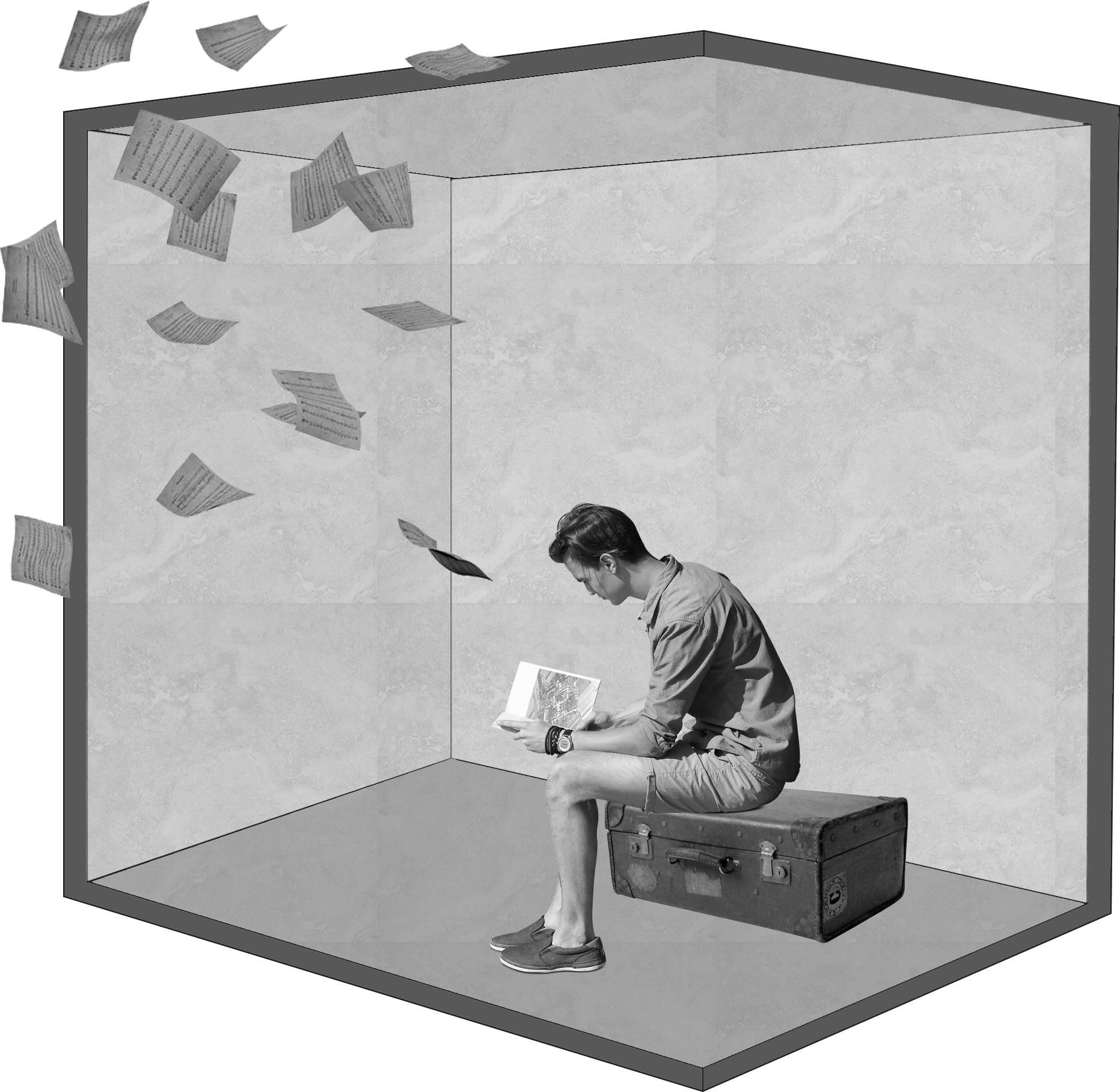
A: That has just been my lifestyle. As a student, I went abroad for one year, that one year eventually became 5 years. In 5 years I had already changed so many dormitories, horrible places, also beautiful flats and apartments… After that I have been travelling intensively. In one year I could have easily been to 17 different countries. In that time you lose the sense of what is your room, what is your home.
Q: HOW MUCH OF PHYSICAL STUFF HAVE YOU CARRIED WITH YOU?
A: People, when they see my luggage, they always laugh. I am kind of an experienced traveller so I know exactly how much I need. It is all only the things I really do need. There is some kind of effortless feeling to it.
I can get attached to small small things, but there are not too many of those things. It can be a book. I have a book that I read once every year. It can be some small part of a memory.
Q: HOW HAS THE NOMADIC LIFESTYLE AFFECTED YOU?
A: Due to my passport luckily or unluckily I cannot choose many locations to move to. So in my case it was all really about being spontaneous. I used so many scholarships to be able to move around, to move abroad.
Coming here, I was able to adjust and I like this place, but it was not my first choice. I am trying to say that there are also circumstances that are moving you from country to country. My focus is to use as much as I can from these places, to learn, to explore, that’s the only way you can know yourself.
Q: WHAT HAVE BEEN THE BIGGEST CHALLENGES FOR YOU ARRIVING TO A NEW PLACE?
A: The house where I live, my neighbours are all estonians. So there’s this guy, I greet him every day, persistently, say “tere” to him. Maybe there has only been one time that he had reacted. But I still keep going, after one and a half years, I still do it. But you have to definitely adjust to the place you arrive to, to some extent. And the body language. We hug each other, we kiss eachother, even the guys kiss eachother as a greeting which here would be just weird. I have challenges with that, I learnt that people don´t do it here, so I never know how to act when a person is approaching me.
When I lived in Sweden I learned quite fast that the peole don´t want you in their private space. So after one year, I was also more distant, I felt my body language change as well. I felt kind of alienated.
Q: WHICH ROOM DO YOU MISS THE MOST?
A: Once I was living on a small island with only 5 other people there. The owner lived also in a tent, the conditions were really nomadic. I would like to return there. I dream of my own little island, I know it´s possible. I would return there, always.
Q: WHAT IS THE FIRST MEMORY OF YOUR ROOM?
A: The first one I think is from the house that was built by my grandparents. I remember the renovation, changing spaces. A huge computer placed on a cardoard box.
Q: WAS IT HARD FOR YOU TO LEAVE THAT PLACE?
A: My independence was stunted when I lived at home, it was shared between different people and I didn’t have much control over it. If it was possible, I would have left earlier. But it wasn’t time until it was time.
Q: WHAT ARE THE MEMORIES THAT COME UP WHEN YOU THINK ABOUT THE MOMENT OF ARRIVAL?
A: The suitcase I’m sitting on top of at the airport. The inconvenience of the phone cord at every step, the phone is always empty just when you need it. The first sun on the cheeks, with my eyes closed.
Q: HOW HAS THE RELOCATION AFFECTED YOU?
A: I suddenly learnt to feel better and better with each new environment. I am comfortable in solitude, I make a nest out of it. But traveling can make you feel really lonely at first, it forces you to think and re-think about stuff.
Q: WHAT HAVE BEEN THE BIGGEST CHALLENGES FOR YOU ARRIVING TO A NEW PLACE?
A: Reading a room is super important. The room can be nurtured and taught to work to your advantage. But probably the biggest job is the mapping, the constant barrage of information, a million things in the room to be aware of.
Q: WHAT HAS HELPED YOU TO ADJUST AND CREATE A SENSE OF HOME?
A: I’m a peoples person. It’s rare for me to be alone. So friends are actually the best way to help creating it. The space has also been supportive, I remember those moments when I just wanted to take a breath, to collect myself, sit down. There was something in the air…
Q: HOW MUCH OF PHYSICAL STUFF HAVE YOU CARRIED WITH YOU?
A: I remember moving out from my childhood home, moving heavy things in and out of the car. Many bags were counted. I hold on to things and they make me feel at home.
Things are constantly coming and going. I appreciate the time I spend with them more, the moments have more weight.
Q: WHAT IS THE MEANING OF HOME?
A: Home is where I feel love. When I close my eyes, something pulls me in, metaphorically holds me so I don’t want to go away. Something to stay for.
Q: WHICH ROOM DO YOU MISS THE MOST?
A: The memory space. I could physically go to the places I miss, but the fact is that space is always changing. The space acquires new meanings and flows out between the fingers. Like a river, in which you can put your hand and feel the heavy force of the current.
The core of the memory space is the grandparent’s summer home, near Pärnu, in the village of Metsaääre. There is the Reiu river, which is adjacent to the fields. When you walk through the furrows of the field, your hands get hot, the sun is starting to rise. It´s summer between my fingers.
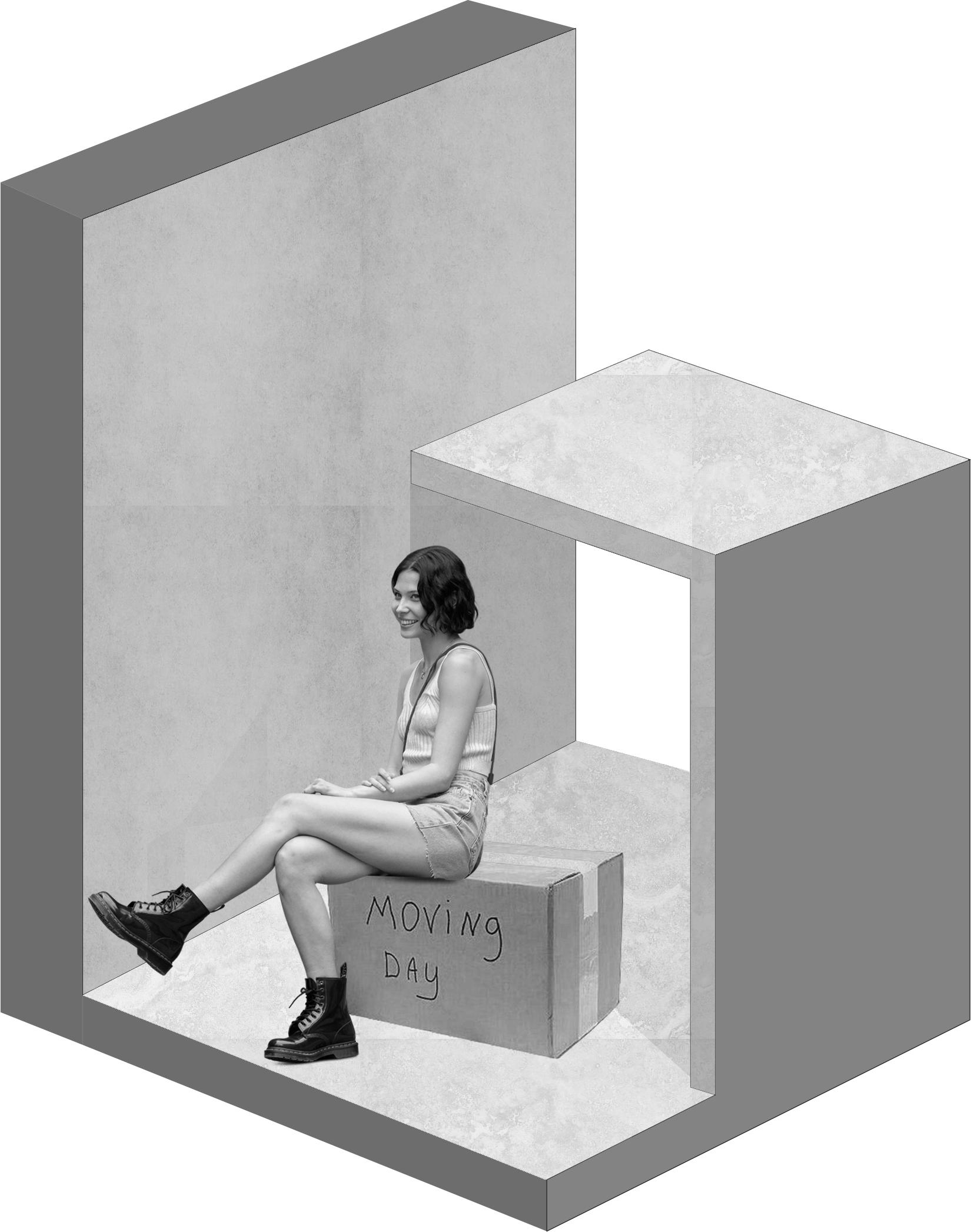
MÕTTETOIDUKS / NOMAADIARHITEKTUUR food for thought / the nomadic architecture
On selge, et paindlik ja mobiilne arhitektuur on rändava elustiili tugisüsteemi loomisel võtmetegur. See võib hõlmata modulaarseid ja kokkupandavaid struktuure, mida saab hõlpsasti teisaldada ning ka paindlikke, multifunktsionaalseid ruume, mida saab kasutada erinevatel eesmärkidel.
Tulevikus võiks rohkem rõhku panna keskkonnasõbralikele, isemajandavate eluasemete võimalustele, mis on kavandatud olema taskukohased ja energiatõhusad, tuginedes täielikult oma enda energiaallikatele. Neid tehnoloogiaid ja lähenemisviise kasutades saaks rändavat elustiili säästval viisil toetada.
Oluline on luua rändajatele võimalus integreeruda kohalikku kogukonda. Seda võiks toetada kaardistav infograafika, kvaliteetne linnaplaneerimine, läbimõeldud ja avatud ruumiprogrammid ja kaasav arhitektuur
Lisaks on tähtis kaasata rändurite kultuurilisi tõekspidamisi, näiteks tagada traditsioonilistele tavade ja rituaalide teostamise võimalused. Sel viisil saavad nomaadid säilitada oma identiteedi ja tavad, võimaldades olla osa ka kohalikust kogukonnast.
It´s clear, that the architecture, which is flexible and mobile is a key factor in creating a successful nomadic lifestyle support system. This could include modular/ prefabricaded/ foldable structures that can easily be moved and stored, in addition, flexible, multi-functional spaces that can be used for different purposes.
We could also explore more the possibilities of eco-friendly, off-grid housing that is designed to be affordable, energy efficient, and environmentally friendly. By utilizing these technologies and approaches, nomadic lifestyles can be supported and encouraged in a more sustainable way.
It is important to create opportunities for migrants to integrate into the local community. This could be supported by infographics, high-quality urban planning, thoughtful and open spatial programs and inclusive architecture.
It is important to incorporate cultural and spiritual beliefs of nomads, providing access to traditional practices and rituals. In this way, they can maintain their own identities and practices while also being allowed to participate more fully in their local communities.
